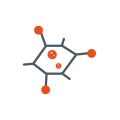Understanding Musculoskeletal Recovery and Its Challenges
Musculoskeletal injuries are a significant concern throughout the United Kingdom, affecting individuals of all ages and walks of life. From sports-related sprains and strains to workplace incidents and age-associated conditions like osteoarthritis, these injuries can have a profound impact on mobility and overall quality of life. The natural healing process is a complex interplay involving inflammation, tissue regeneration, and gradual restoration of strength and flexibility. However, recovery is rarely straightforward. Many people face obstacles such as persistent pain, limited movement, delayed healing due to underlying health conditions, or insufficient access to rehabilitation resources. For older adults or those with chronic illnesses, healing can be even slower, compounded by factors like poor nutrition or decreased physical activity. Recognising these challenges underscores the importance of exploring supportive strategies—including nutritional supplementation—to potentially aid the body’s natural repair mechanisms and foster more efficient musculoskeletal recovery.
2. Vitamins and Minerals: Key Players in Recovery
When it comes to musculoskeletal recovery, certain vitamins and minerals are fundamental to the healing process. In the UK, where dietary habits and limited sun exposure can influence nutrient status, understanding these key nutrients is particularly important. Among the most notable are Vitamin D, calcium, magnesium, and a handful of other micronutrients that play distinct roles in supporting bone and muscle repair.
Essential Nutrients for Musculoskeletal Health
Vitamin D is crucial for calcium absorption and bone health. Given the UK’s often overcast climate, many people may not receive adequate sunlight exposure needed for optimal Vitamin D synthesis. This shortfall can impact bone density and slow the repair of musculoskeletal tissues. Calcium works hand-in-hand with Vitamin D; it is vital for maintaining bone structure and supporting muscle contractions during the recovery process. Magnesium, meanwhile, supports energy production within muscle cells and contributes to protein synthesis—both essential for effective tissue repair.
Common Dietary Sources in the UK
| Nutrient | Main Function | UK Dietary Sources |
|---|---|---|
| Vitamin D | Promotes calcium absorption; supports bone health | Oily fish (e.g., salmon, mackerel), fortified cereals, eggs; also synthesised from sunlight |
| Calcium | Builds and maintains bones; assists muscle function | Dairy products (milk, cheese), green leafy vegetables (kale, broccoli), fortified plant-based milks |
| Magnesium | Aids muscle relaxation; supports energy metabolism | Nuts (almonds), whole grains, spinach, legumes |
The Challenge of Sunlight in the UK
Unlike countries with year-round sunshine, residents in the UK may struggle to meet their Vitamin D requirements through sun exposure alone, especially during autumn and winter months. The NHS recommends supplementation for at-risk groups, including older adults and those who spend limited time outdoors. Ensuring an adequate intake of these nutrients through diet or supplements can make a meaningful difference in speeding up musculoskeletal recovery after injury or surgery.

3. Scientific Evidence: Do Supplements Really Work?
When considering the role of vitamins and minerals in musculoskeletal recovery, it is important to examine recent research from both British and international perspectives. Over the past decade, numerous studies have sought to clarify whether supplementation genuinely accelerates or enhances recovery following injury, surgery, or strenuous physical activity.
Several UK-based clinical trials have explored the impact of vitamin D on muscle strength and bone healing. A notable study published by researchers at the University of Birmingham found that adequate vitamin D status was associated with improved muscle function in older adults recovering from hip fractures. However, they also noted that supplementing beyond correcting a deficiency did not yield further improvements, suggesting that optimal—not excessive—levels are key.
Similarly, investigations into calcium supplementation reveal a nuanced picture. While calcium is undeniably crucial for bone health, recent guidance from the National Institute for Health and Care Excellence (NICE) advises that dietary intake should be prioritised over supplements unless a clear deficiency exists. Excessive supplementation may even carry risks, such as kidney stones or cardiovascular issues, particularly in older populations who often take multiple medications.
Internationally, a 2023 review in The Lancet Rheumatology examined the effects of multi-nutrient supplements—including magnesium, zinc, and vitamin C—on musculoskeletal recovery post-injury. The findings were mixed: while some evidence supports the use of magnesium for reducing muscle cramps and aiding neuromuscular function, the benefits of vitamin C and zinc were less consistent. The review emphasised that individual nutritional status and underlying health conditions must be considered before recommending supplements universally.
In summary, while certain vitamins and minerals play essential roles in musculoskeletal health, current scientific evidence does not robustly support routine supplementation for everyone recovering from musculoskeletal injuries. Personalisation appears to be key; tailored advice from healthcare professionals ensures that any supplementation addresses specific deficiencies rather than adopting a one-size-fits-all approach.
4. Cultural Considerations: British Habits and Attitudes Towards Supplementation
Understanding the science behind supplementation in musculoskeletal recovery requires an appreciation of cultural context, particularly here in the UK. British dietary patterns, public health guidelines, and prevailing attitudes towards vitamins and minerals all play a significant role in shaping how supplements are used to support recovery.
Dietary Patterns in the UK
The traditional British diet has evolved over time, often reflecting a balance between home-cooked meals and convenience foods. While staples such as fish, potatoes, and vegetables remain common, there has been an increased reliance on processed foods, which can sometimes lead to nutritional gaps. These gaps become particularly relevant when considering nutrients essential for musculoskeletal health—such as vitamin D, calcium, and magnesium.
| Nutrient | Common Sources in UK Diet | Potential Gaps |
|---|---|---|
| Vitamin D | Oily fish, fortified cereals, sunlight exposure | Limited sunlight during winter months leads to deficiency risk |
| Calcium | Dairy products, leafy greens, fortified plant milks | Lactose intolerance or vegan diets may reduce intake |
| Magnesium | Nuts, seeds, whole grains | Processed food consumption can lower overall intake |
Public Health Guidelines and Recommendations
The NHS provides clear advice regarding supplementation. For instance, vitamin D is recommended for everyone during autumn and winter due to limited sun exposure. Calcium recommendations are particularly emphasised for older adults and those at risk of osteoporosis. However, with most nutrients, the NHS encourages obtaining them from a balanced diet first, using supplements only when necessary to address specific deficiencies.
NHS Guidance at a Glance:
- Vitamin D: 10 micrograms daily during autumn and winter for all adults.
- Calcium: 700 mg per day for adults; supplements considered if dietary intake is insufficient.
- Magnesium: No official recommendation unless deficiency is identified.
Attitudes Towards Supplement Use in Britain
The British public tends to approach supplementation with caution. Surveys show that while awareness of vitamins and minerals is high, there remains a preference for “food first” solutions. This cautious approach is influenced by widespread media coverage about potential risks of over-supplementation and an ingrained trust in NHS guidance. Individuals recovering from musculoskeletal injury may be advised by healthcare professionals to consider supplements as part of their rehabilitation plan—but only after careful evaluation of their diet and specific needs.
Cultural Influences on Recovery Practices:
- Scepticism towards “quick fixes”: Emphasis on gradual lifestyle changes rather than immediate supplementation.
- Reliance on professional advice: Many prefer consulting GPs or registered dietitians before starting supplements.
- Acknowledgement of individual needs: Recognition that age, activity level, and existing medical conditions affect supplement requirements.
This thoughtful approach ensures that supplementation becomes an adjunct—rather than a substitute—for a healthy diet and lifestyle during musculoskeletal recovery in the UK context.
5. Safety, Dosage, and NHS Recommendations
When considering supplementation for musculoskeletal recovery, it’s essential to balance the potential benefits with safety and evidence-based guidance. While vitamins and minerals can support recovery from injuries or surgeries, taking more is not always better. In the UK, both the NHS and British Dietetic Association (BDA) offer clear recommendations to help you make informed choices.
Safe Supplementation: What You Need to Know
Before starting any supplement, consult with your GP, especially if you have underlying health conditions or take prescribed medicines. Some supplements can interact with medications or exacerbate certain medical problems. For most people eating a balanced diet, additional supplementation may not be necessary except in specific cases—such as vitamin D during autumn and winter, as advised by Public Health England.
Typical Dosages and Potential Risks
The NHS provides recommended nutrient intakes to avoid both deficiency and toxicity:
- Vitamin D: Adults are generally advised to take 10 micrograms (400 IU) daily in the darker months. Exceeding 100 micrograms (4000 IU) per day can be harmful.
- Calcium: Aim for 700 mg per day through diet; supplements are only needed if dietary intake is insufficient. High doses above 1500 mg daily may increase the risk of kidney stones.
- Magnesium: The safe upper limit from supplements is 350 mg per day; excessive intake can cause digestive upset.
- Vitamin C: Up to 1000 mg daily is considered safe for short periods, but exceeding this regularly can lead to gastrointestinal issues.
Megadoses of any vitamin or mineral rarely aid recovery and may do more harm than good. Always check product labels for content and avoid combining multiple supplements that could lead to excess intake.
NHS and BDA Guidance: Practical Steps
The NHS and BDA recommend prioritising food sources of nutrients over supplements whenever possible. Incorporate a variety of fruits, vegetables, lean proteins, dairy or fortified alternatives, whole grains, nuts, and seeds into your meals to cover your needs naturally. If a supplement is advised for your situation—whether due to restricted diets, absorption issues, or specific musculoskeletal concerns—choose products that meet UK safety standards (look for the THR logo on herbal products).
A Gentle Reminder
Your body’s needs are unique, particularly during recovery from musculoskeletal issues. Regularly review your supplement use with a healthcare professional and adjust according to your progress and changing needs. Remember: a thoughtful approach grounded in NHS guidance ensures both safety and effectiveness on your path to wellbeing.
6. Integrating Supplements Into a Holistic Recovery Plan
When considering the science behind supplementation for musculoskeletal recovery, it is important to remember that vitamins and minerals are just one part of a much broader picture. For British patients and their carers, weaving supplements into a holistic recovery plan offers the best chance for meaningful, sustainable improvement.
Nutritional Strategies in Everyday Life
While supplements such as vitamin D, calcium, and magnesium can help address deficiencies or support recovery, they should ideally complement, not replace, a balanced diet. Encouraging regular consumption of locally available whole foods—like oily fish for omega-3s, leafy greens for magnesium, and dairy for calcium—lays a strong foundation. Consulting with a registered dietitian or NHS nutritional therapist ensures that any supplementation aligns with individual dietary needs and avoids unnecessary excess.
Physical Therapy: Moving Towards Better Outcomes
Combining nutritional strategies with physical therapy enhances musculoskeletal healing. Physiotherapists on the NHS or within private practice can tailor rehabilitation exercises to suit each person’s condition and goals. Engaging in gentle movement, such as walking in the local park or participating in supervised group classes at the community centre, supports joint mobility and muscle strength while reinforcing the benefits of proper nutrition.
Lifestyle Changes for Long-Term Wellbeing
Recovery does not end with supplements and exercise. Sleep hygiene, stress management, and social connection all play vital roles. Carers can encourage restful routines by creating calming evening environments or helping to establish regular sleep schedules. Mindfulness activities—such as gardening, reading, or enjoying a cup of tea together—can gently reduce stress and foster emotional resilience.
Encouraging Balance and Ongoing Support
A balanced approach means recognising that there is no single “miracle” pill or practice. Patients and carers should feel empowered to ask questions during GP visits or seek advice from their local pharmacist about safe supplement use. Keeping communication open within families and care teams ensures everyone works together towards shared health goals.
Ultimately, blending evidence-based supplementation with thoughtful nutrition, personalised physical therapy, and caring lifestyle adaptations provides British patients with the best possible support on their journey to musculoskeletal recovery. This gentle yet comprehensive approach honours both science and daily life, nurturing hope and resilience along the way.


